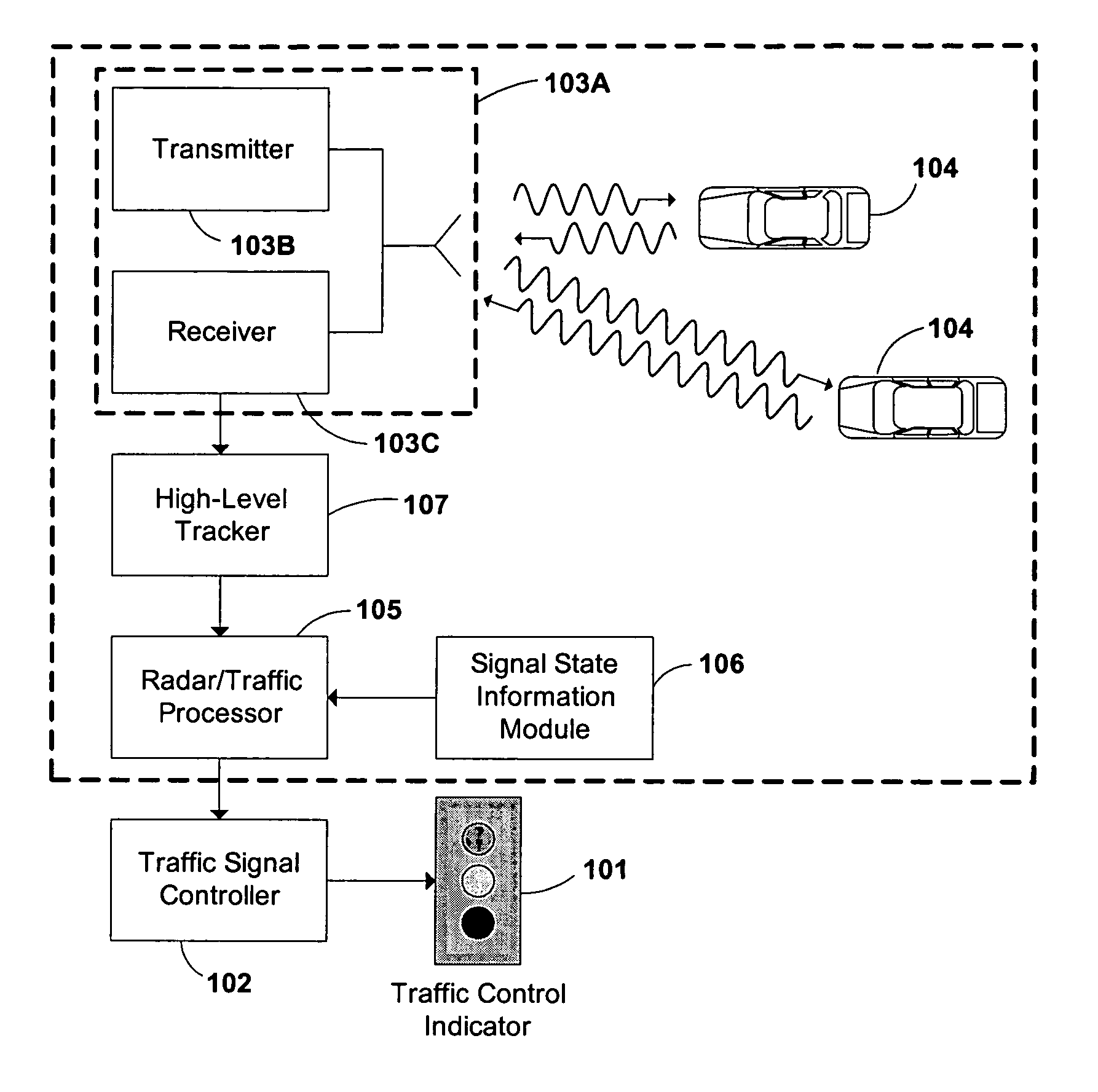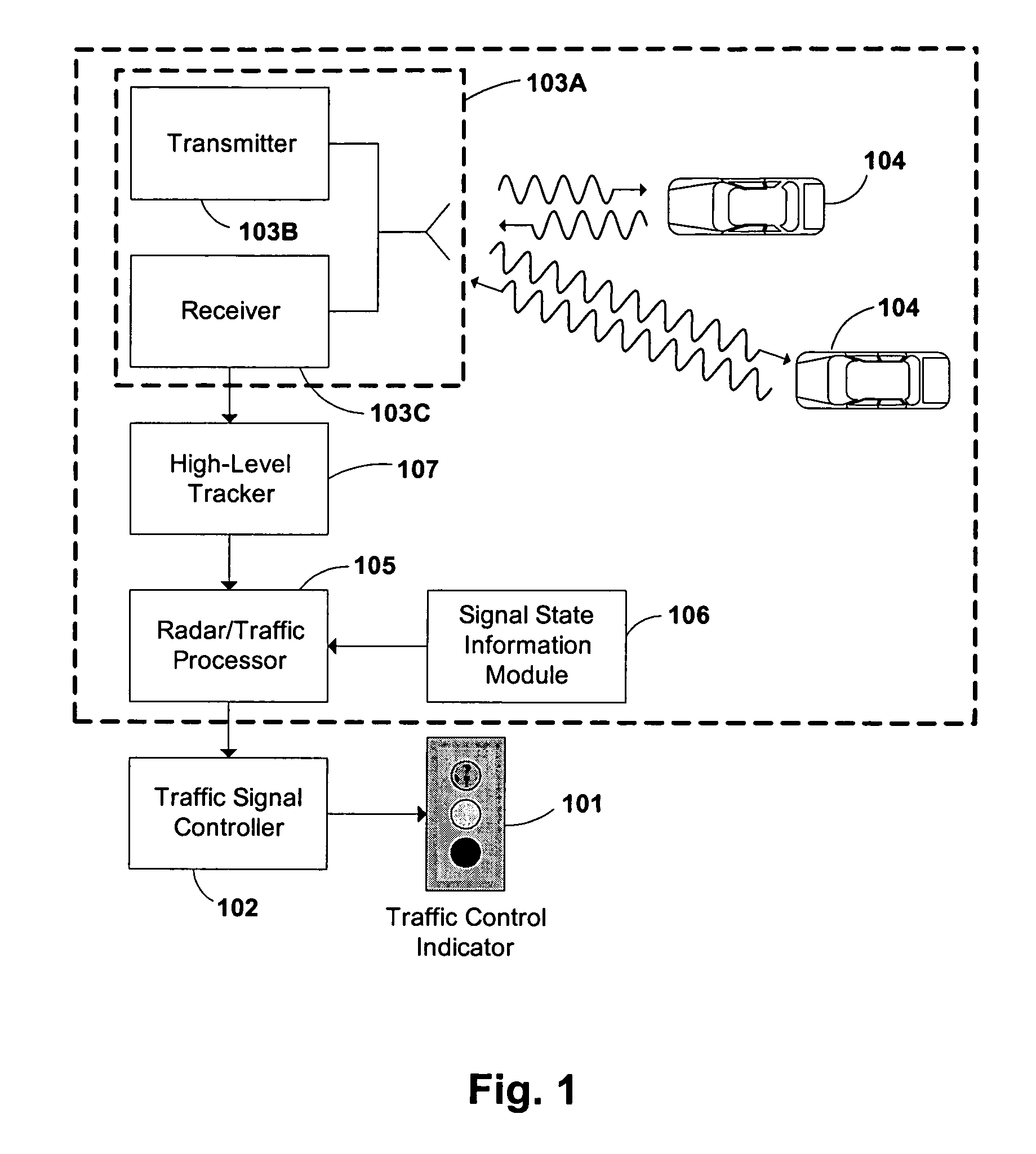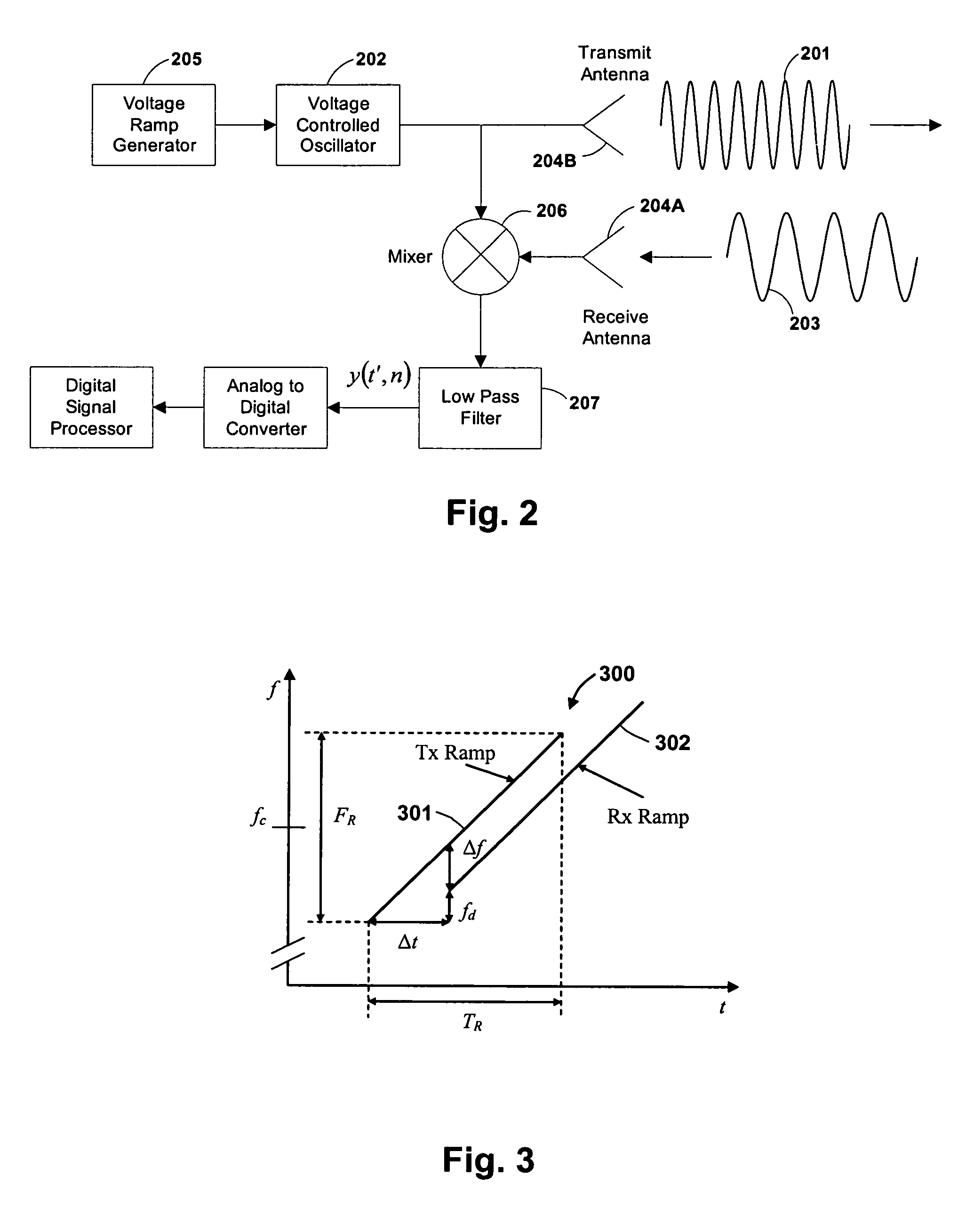Traffic light signal system using radar-based target detection and tracking
a traffic light signal and target detection technology, applied in the field of traffic control indicators, can solve the problems of system failure in field trials, video cameras only detecting the position and velocity of vehicles, and longer green light delays, so as to reduce reduce the chance of accidents and pavement damage, and save energy
- Summary
- Abstract
- Description
- Claims
- Application Information
AI Technical Summary
Benefits of technology
Problems solved by technology
Method used
Image
Examples
Embodiment Construction
[0030]A block diagram of one exemplary embodiment of the present invention is shown in FIG. 1. The system is implemented using at least one traffic control indicator 101 adapted to control or alert traffic at a roadway intersection. A traffic signal controller 102 coupled to the traffic control indicator 101 is adapted to change the states of the traffic control indicator 101, and is conventionally located in a controller cabinet near the intersection. An RF emissions apparatus, such as a radar 103A, is operable to transmit signals using transmitter 103B toward, and receive signals from, a plurality of object / vehicle targets 104. Object / vehicle targets 104 may include cars, trucks, motorcycles, bicycles, pedestrians, or any other type of object commonly found in or traversing an intersection. A radar / traffic processor 105 adapted to receive processed information from the RF emissions receiver apparatus, such as a receiver 103C, is coupled to both the traffic signal controller 102 an...
PUM
 Login to View More
Login to View More Abstract
Description
Claims
Application Information
 Login to View More
Login to View More - R&D
- Intellectual Property
- Life Sciences
- Materials
- Tech Scout
- Unparalleled Data Quality
- Higher Quality Content
- 60% Fewer Hallucinations
Browse by: Latest US Patents, China's latest patents, Technical Efficacy Thesaurus, Application Domain, Technology Topic, Popular Technical Reports.
© 2025 PatSnap. All rights reserved.Legal|Privacy policy|Modern Slavery Act Transparency Statement|Sitemap|About US| Contact US: help@patsnap.com



